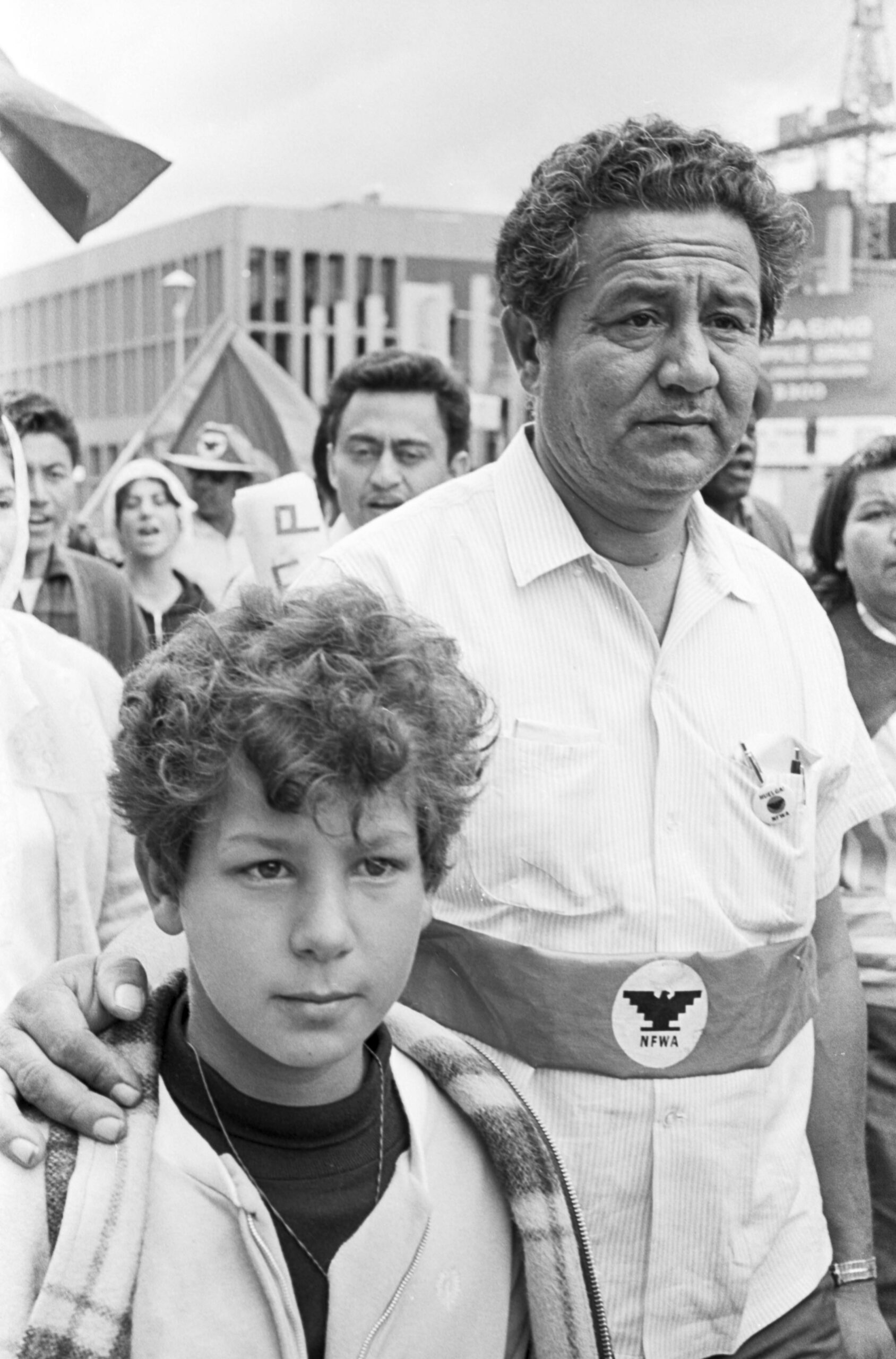Julio Hernández
Julio Hernández
Julio and Fina Hernández talking with others at the credit union, Delano, ca. 1966. Photo by Emmon Clarke.
As a young adult in Sonora, Julio worked as a barber and as a carpenter. His life changed forever when he met and married Josefina, or “Fina” as she came to be known. Fina, a U.S. citizen, wanted to return to the United States, and so they returned, landing in Riverside, California where they lived briefly with one of her aunts. Soon, they moved to Corcoran, California, where Fina’s father found him agricultural work.
Hernández remembers that living conditions were difficult in Corcoran and any protest or union activity was harshly punished by large growers who were quick to blacklist farmworkers who sought to organize. In fact, Hernández, his wife Fina, and their children briefly lived in Oregon after he participated in a sugar beet strike against Sager in Corcoran. Both Julio and Fina were officers of the Community Service Organization (CSO) in Corcoran and Julio was a labor contractor.
Julio and Fina Hernández talking with others at the credit union, Delano, ca. 1966. Photo by Emmon Clarke.
Kathy Lynch, Larry Itliong, César Chávez, Daniel de los Reyes, and Julio Hernández singing at Filipino Hall, Delano, ca. 1966. Photo by Emmon Clarke.
Julio and Fina Hernández and the NFWA
Tom & Ethel Bradley Center
California State University, Northridge
18111 Nordhoff Street, Northridge, CA 91330
Phone: (818) 677-1200 / Contact Us


